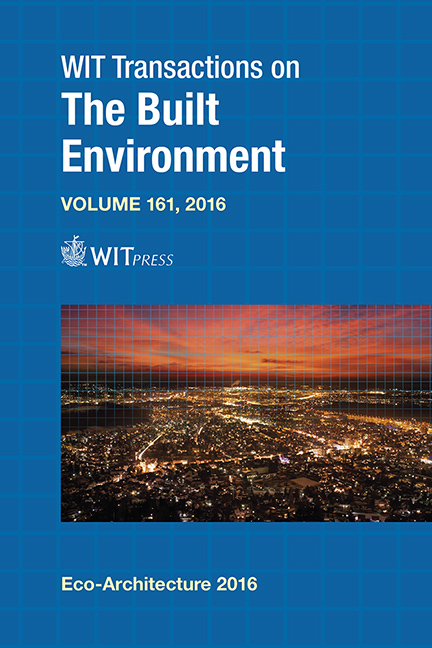Sustainable Natural Consumption As A Strategy For Mitigating Climate Change In Colombia: Understanding Local Conditions To Match Global Issues
Price
Free (open access)
Transaction
Volume
161
Pages
10
Page Range
23 - 32
Published
2016
Paper DOI
10.2495/ARC160031
Copyright
WIT Press
Author(s)
A. González Castaño, G. L. Penagos García, S. Molina Escobar
Abstract
According to the Intergovernmental Panel on Climate Change (IPCC) the building sector is responsible for 40% of greenhouse gas (GHG) emissions. Since most of the global electricity comes from fossil fuels, most of the GHG emissions from buildings are caused by the consumption of electric power during the operation phase. Hence energy efficiency in buildings has been identified as one of the main strategies for climate change mitigation. In Colombia, this strategy is part of the National Plan for Low Carbon Development. Although in this country 70% of electricity is produced from hydropower, a renewable source with low GHG emission factors.
On the other hand there is a high deficit of social housing and an accelerated process of urban growth in Colombia, where the building systems are characterized by a low level of industrialization, a high intensity of materials (2.5 ton/m2) and a substantial production of construction waste (1.0 ton/m2). By using emission factors for construction materials in Colombia, recently calculated by the United Nations Environmental Programme and the National Unidad de Planeación Mineroenergética, this study conducted at The Metropolitan Area of the Aburrá Valley shows that production of materials for the construction of new buildings produces 2.4 times more GHG emissions annually than the total electricity consumption of all existing buildings. There are no emission factors from construction activities and construction waste disposal specific to the Aburrá Valley, but these would evidently be directly related to the total weight of materials involved. Although electricity efficiency of buildings is an important issue to urban sustainability in terms of economic costs, we conclude that a strategy oriented to reducing the intensity of materials in the construction sector would have an impact, not only larger but also probably more cost-effective, on reducing national GHG emissions.
Keywords
carbon footprint, sustainable materials, construction systems, emissions, life cycle





